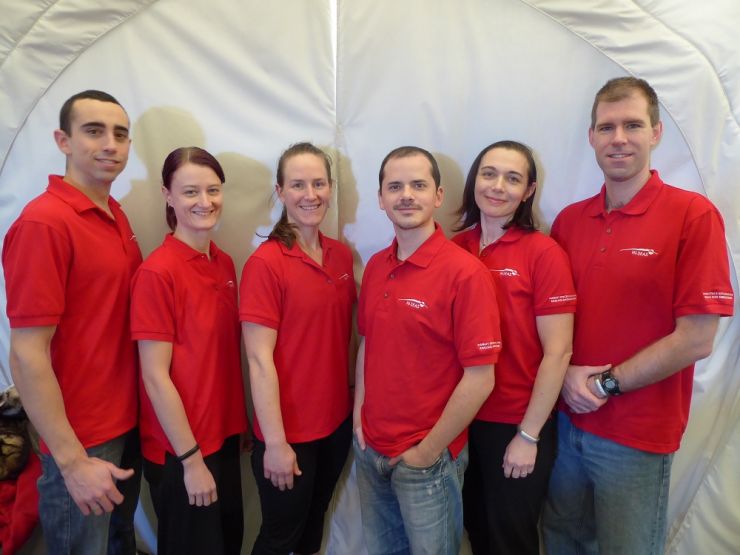
HI-SEAS IV Crew Photo
When: Monday, August 29, 2016, 6 p.m. (Note: this is one hour later than normal)
Where: NELHA Gateway Center
Presenter: HI-SEAS Mission Crew
Imagine you are on a mission to Mars with five other people: what strategies would you use to to ensure team cohesion and performance over periods of months or years? Since August 2015, the six "lavanauts"—simulated astronauts in Hawai`i—in the HI-SEAS Mars simulation have been living that experience. The HI-SEAS IV team lives and works in a 1200 square foot solar-powered habitat on Mauna Loa. They wear simulated space suits outside the habitat, receive only occasional "robotic resupply rockets", and communicate with mission control over a data link with a deliberate 20-minute delay.
On August 28, 2016, they will return home to Earth. Join us the next day (Monday, August 29) at Kona Science Café, where the team will describe the mission, some of their individual research, and insights they gained from the experience. How did they compensate for not being able to talk directly to their family? Now that they have been on "Mars" for a year, what message do they have for the people of Earth?
Hawai`i Space Exploration Analog and Simulation (HI-SEAS) is a NASA-funded research program that has been running long-duration experiments to simulate future missions to Mars. Mission I in 2013 investigated the resource costs, nutrition, and psychosocial benefits of two food systems over the course of 4 months. Missions II, III, and IV (4, 8, and 12 months, respectively) have been focused on team performance and cohesion.
The HI-SEAS IV crew consists of:
- Carmel Johnston, MS, Crew Commander, soil scientist
- Christiane Heinicke, PhD, Chief Scientific Officer & Crew Physicist, physicist and engineer
- Sheyna E. Gifford, MD, Chief Medical and Safety Officer & Crew Journalist, physician
- Andrzej Steward, SM, Chief Engineering Officer, aerospace engineer
- Cyprien Verseux, MS, Crew Biologist, astrobiologist
- Tristan Bassingthwaighte, M.Arch, Crew Architect, D.Arch candidate
The HI-SEAS principal investigator is Dr. Kim Binsted, a professor at UH Manoa. Many research groups around the world are also conducting studies with data from the mission. These include using 3D virtual reality interactions with the crew's family and friends to mitigate the effects of isolation, measuring emotional states by automatically analyzing the text of crew communications, and studies on stress and cognitive monitoring. See hi-seas.org for more information.
After the presentation, we will have pupus, drinks, and conversation. We are informal and it is potluck, so please bring a pupu and non-alcoholic beverage to share. Reusable plates and cups are encouraged, as is taking home your own trash.
Agenda:
6:00-6:15 p.m. Gather and Networking
6:15-7:15 p.m. Presentation and Q&A
7:15-7:45 p.m. More Networking, pupus
